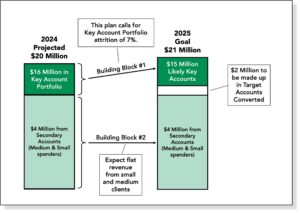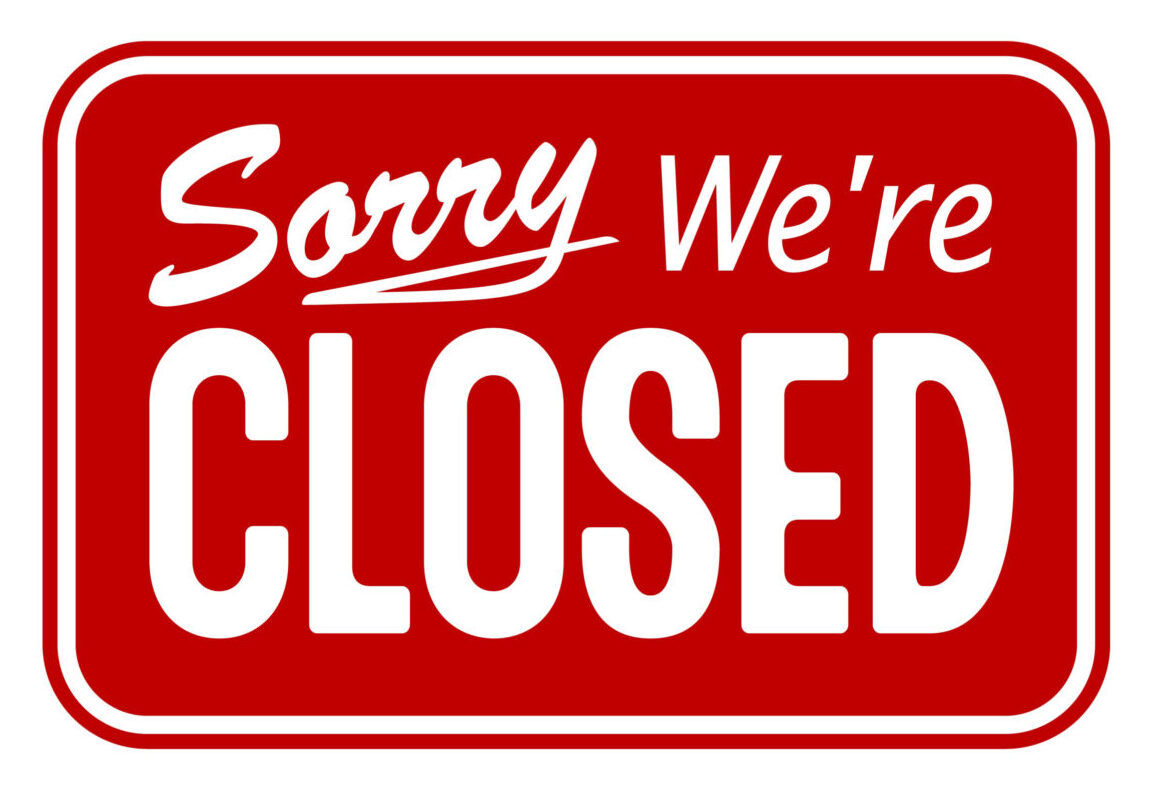With the third quarter behind us, October provides the perfect opportunity to build a plan to achieve the growth you need in 2025. As we have said in earlier articles, it will take three separate building blocks to achieve the growth goals you set for next year. The planning process should identify those three building blocks as early as possible so the sales team can begin to ramp up to the performance they will be expected to deliver in 2025.
Begin the planning process by setting clear goals
The planning process begins in earnest when leadership sets clear goals for 2025. We know that some leaders still set one large revenue goal, while others prefer to set separate goals for each platform (one growth goal for spot radio; a separate growth goal for digital, etc.). Either way, clear goals give meaning to the planning process.
Sort your 2024 active clients

Publish a list of all the 2024 active clients, showing actual dollars through September 30 and any dollars booked through December 31. Consider using a Platform Usage Report format (like the image above), so you can see what each client has spent in each platform and in total.
Sort the accounts from largest to smallest by total spending. The top 25% are the Likely Key Accounts and the bottom 75% are the Likely Secondary Accounts.
Take note of the dollars spent by your smallest Likely Key Account. You will use that number later to set a Target Account Goal.
At this point, the sales management team will begin a series of conversations with the salespeople which will lead to the development of a plan to achieve the growth goals that have been set by the executive leadership of the company.
Project the 2024 finish
First, the salespeople and sales managers will work together to arrive at the projected final 2024 spending for every Likely Key Account and every Likely Secondary Account. You should expect this phase to take about a week. When this phase has been completed, the sales management team should have a credible projected finish for 2024.
Building Block #1 – Set Likely Key Account goals for 2025
Next, the sellers and their sales managers will collaborate to set 2025 revenue goals for every one of their Likely Key Accounts. This phase could take another week, as these goals require research and thoughtful consideration. These are not guesses or estimates. These are commitments the sellers and managers make and work hard to achieve for every Likely Key Account. The Platform Usage Report becomes a particularly valuable tool during this step, as it reveals the degree to which each account is taking full advantage of the company’s valuable tools.
Expect some goals to be above and some below each account’s 2024 spending. If the account is out of business or simply not returning, the goal could be zero.
Once this phase has been completed, the sales management team will have a rational revenue goal for every Likely Key Account as well as an expectation of what all those accounts will spend in the aggregate in 2025.
Building Block #2 – Expect flat Likely Secondary Account spending in 2025
The data consistently shows that, at best, the revenue from Likely Secondary Accounts will stay flat from one year to the next. This is because the bottom 75% of any cluster’s accounts typically experiences very high churn. So, while the clients will be different, the total spending will be roughly the same as in 2024.
That said, the Likely Secondary Accounts are a potential treasure trove of Target Accounts for the sales team, which we will explore in a moment.
Let’s take stock of the work that has been done so far.
With the help of the image below, let’s imagine that we have been discussing a radio cluster that is projecting to finish 2024 at $20 Million. From experience, we can predict that $16 Million will come from its Key Accounts and $4 Million will come from its Secondary Accounts.

To the right, we see that executive leadership has set a $21 Million goal for 2025. We can also see that sales management can already see a path to $19 Million in revenue for 2025. The remaining $2 Million gap must be made up by an aggressive Target Account effort, which brings us to building block #3.
Building Block #3 – Create $2 Million in Target Account conversions
Earlier, you took note of the spending of the smallest Likely Key Account. We recommend that you add 30% to that number to arrive at your Target Account Goal.
If the smallest Likely Key Account spent $40,000, adding 30% to it would result in a $52,000 Target Account goal. Simple division tells us that we need to grow 38 accounts to the Target Account goal to make up the $2 Million gap.
The last phase of the planning process consists of the sales managers helping the salespeople scrutinize their Likely Secondary Accounts as well as their non-spending prospects to identify Target Accounts that can grow to $52,000 or more.
Leaders: Stick to your goals and expect proactivity
Following this plan will help your sales team build a plan to achieve your goals in 2025. But this is just the math. The trick is to stay focused on its execution in spite of the daily adversity.
If you are an executive leader, stick to your goals and don’t abandon them at the first sign that they don’t appear “realistic.” Expect your sales organization to shift their strategy from reactive to proactive and from small clients to big clients. Encourage them to make the necessary adjustments during the year to achieve the goals you have set.
Your company and the industry will be better for it.


